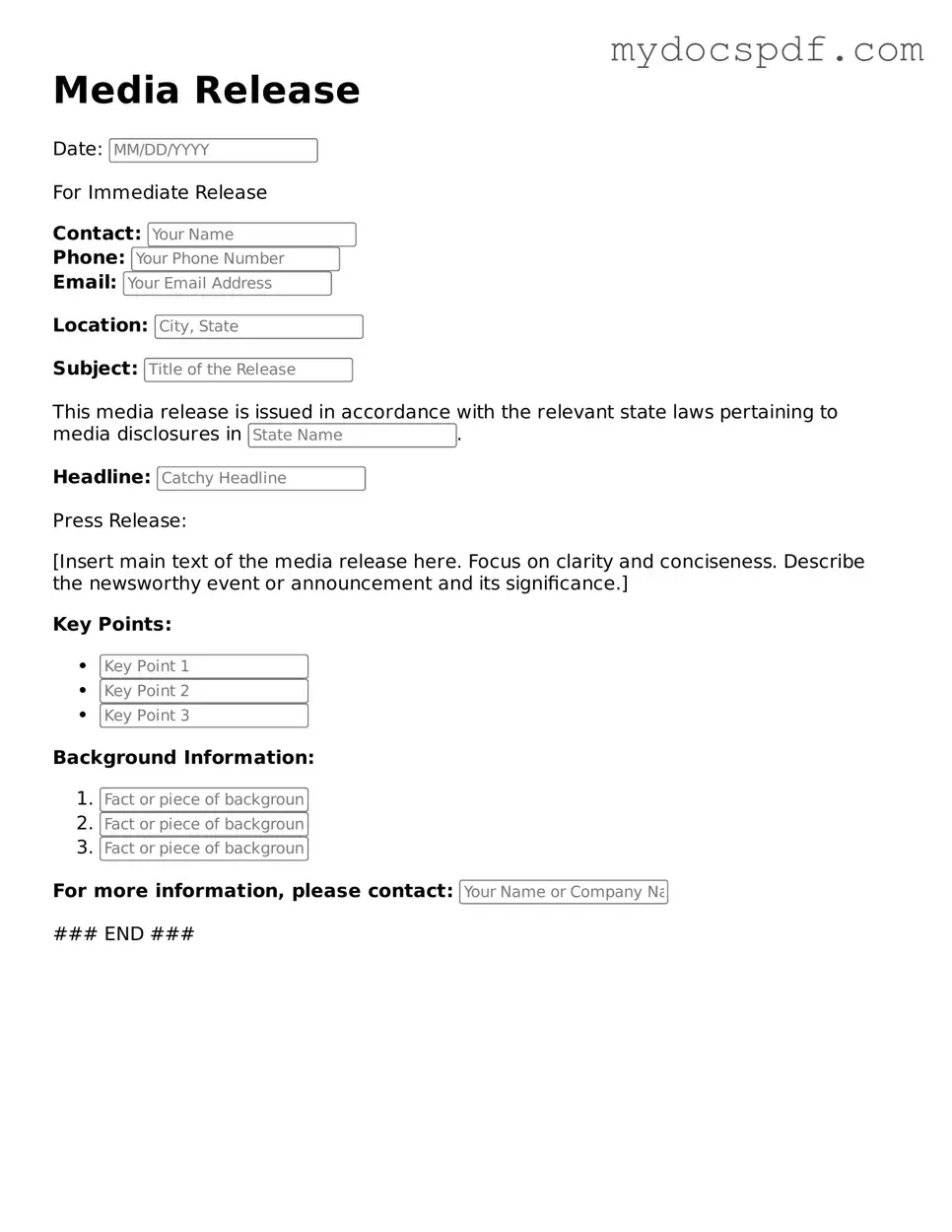The Media Release form is an essential document that plays a crucial role in various settings, from educational institutions to corporate environments. This form grants permission for the use of an individual's likeness, voice, or other personal attributes in media productions, such as photographs, videos, or promotional materials. By signing this document, individuals acknowledge their understanding of how their image or information may be used, often for marketing or educational purposes. Importantly, the Media Release form also outlines any limitations or conditions regarding the use of the material, ensuring that the rights of the individual are respected. It serves as a protective measure for both parties involved, providing clarity and legal backing that can prevent misunderstandings in the future. Understanding the significance of this form can empower individuals to make informed decisions about their representation in media and help organizations navigate the complexities of consent and privacy.
